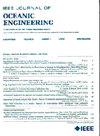Utility-Centered Underwater Image Quality Evaluation
IF 5.3
2区 工程技术
Q1 ENGINEERING, CIVIL
引用次数: 0
Abstract
In recent decades, the emergence of image applications has greatly facilitated the development of vision-based tasks. As a result, image quality assessment (IQA) has become increasingly significant for monitoring, controlling, and improving visual signal quality. While existing IQA methods focus on image fidelity and aesthetics to characterize perceived quality, it is important to evaluate the utility-centered quality of an image for popular tasks, such as object detection. However, research shows that there is a low correlation between utilities and perceptions. To address this issue, this article proposes a utility-centered IQA approach. Specifically, our research focuses on underwater fish detection as a challenging task in an underwater environment. Based on this task, we have developed a utility-centered underwater image quality database (UIQD) and a transfer learning-based advanced underwater quality by utility assessment (AQUA). Inspired by the top–down design approach used in fidelity-oriented IQA methods, we utilize deep models of object detection and transfer their features to the mission of utility-centered quality evaluation. Experimental results validate that the proposed AQUA achieves promising performance not only in fish detection but also in other tasks such as face recognition. We believe that our research provides valuable insights to bridge the gap between IQA research and visual tasks.以实用为中心的水下图像质量评价
近几十年来,图像应用的出现极大地促进了基于视觉的任务的发展。因此,图像质量评估(IQA)在监测、控制和提高视觉信号质量方面变得越来越重要。虽然现有的IQA方法侧重于图像保真度和美学来表征感知质量,但对于常用任务(如对象检测),评估图像的实用质量非常重要。然而,研究表明,效用与认知之间的相关性很低。为了解决这个问题,本文提出了一种以实用程序为中心的IQA方法。具体来说,我们的研究重点是水下鱼类检测,这是水下环境中一项具有挑战性的任务。基于这一任务,我们开发了一个以实用为中心的水下图像质量数据库(UIQD)和一个基于迁移学习的高级水下质量效用评估(AQUA)。受面向保真度的IQA方法中使用的自上而下设计方法的启发,我们利用对象检测的深层模型,并将其特征转移到以实用为中心的质量评估任务中。实验结果表明,该方法不仅在鱼类检测中具有良好的性能,而且在人脸识别等其他任务中也具有良好的性能。我们相信我们的研究提供了有价值的见解,以弥合IQA研究和视觉任务之间的差距。
本文章由计算机程序翻译,如有差异,请以英文原文为准。
求助全文
约1分钟内获得全文
求助全文
来源期刊

IEEE Journal of Oceanic Engineering
工程技术-工程:大洋
CiteScore
9.60
自引率
12.20%
发文量
86
审稿时长
12 months
期刊介绍:
The IEEE Journal of Oceanic Engineering (ISSN 0364-9059) is the online-only quarterly publication of the IEEE Oceanic Engineering Society (IEEE OES). The scope of the Journal is the field of interest of the IEEE OES, which encompasses all aspects of science, engineering, and technology that address research, development, and operations pertaining to all bodies of water. This includes the creation of new capabilities and technologies from concept design through prototypes, testing, and operational systems to sense, explore, understand, develop, use, and responsibly manage natural resources.
 求助内容:
求助内容: 应助结果提醒方式:
应助结果提醒方式:


